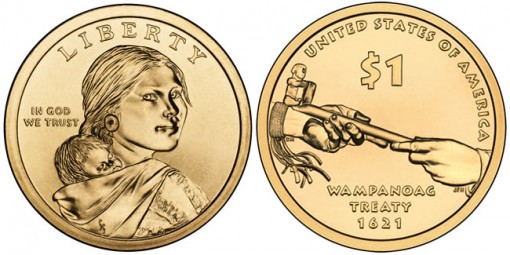The 2011 Native American $1 Coins mark the third year in a series featuring annually changing reverse designs.
However, these strikes are actually a continuation of the Sacagawea Dollars that first were issue by the US Mint in 2000 but featured static reverse designs. The process of changing those reverses annually was mandated by Congress with the passage of the Native American $1 Coin Act signed by President George W. Bush on September 20, 2007 as Public Law 110-82.
Under the Act, the US Mint is required to put new reverse designs including "images celebrating the important contributions made by Indian tribes and individual Native Americans to the development of the United States and the history of the United States." This series is required to run until 2016 when the Presidential $1 Coin program ends, at which time the Treasury Secretary may decide on future design themes.
A stipulation in the Act dictates that, to the best extent possible, the new reverse designs on these Native American $1 Coins be issued in as close to chronological order as feasible. With that in mind, the first strike issued in the series debuted in 2009 and depicted the "Three Sisters" method of planting developed by the Native Americans over a millennia ago.
The 2010 strike was developed with a reverse design emblematic of the Iroquois Confederacy. This was a loose political and diplomatic alliance established by five Native American tribes in the early 1400’s.
Shown on the reverse of the 2011 Native American $1 Coin is a design symbolic of treaties established by Native Americans and the first European settlers as they arrived in the New World. It shows a peace pipe being exchanged by the hands of Supreme Sachem Ousamequin Massasoit and Governor John Carver in 1621. The design was completed by Richard Masters and sculpted by Joseph Menna.
The obverse of the coin contains the same portrait of Sacagawea seen on these golden dollars since 2000. Sacagawea was a young Shoshone woman who accompanied the Lewis and Clark Expedition as a guide.

